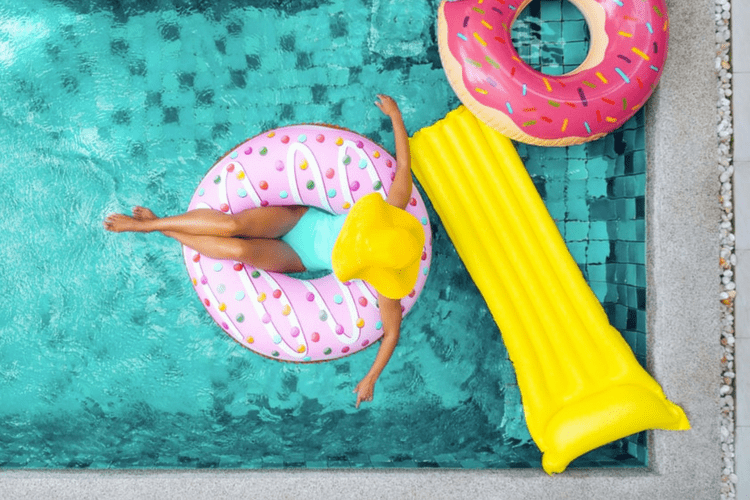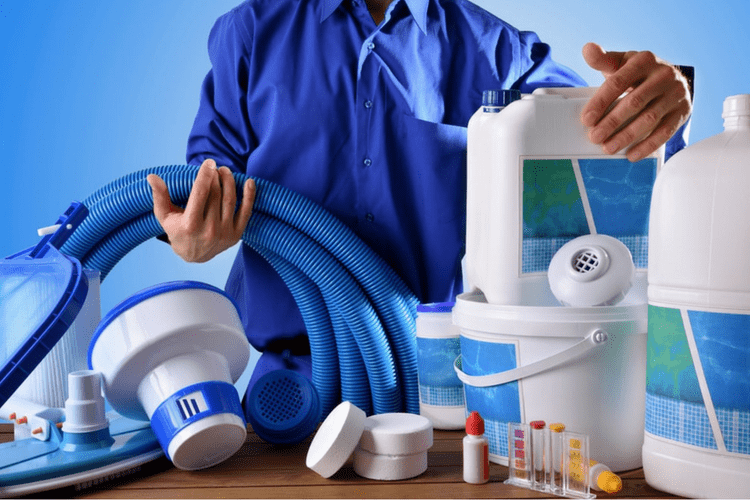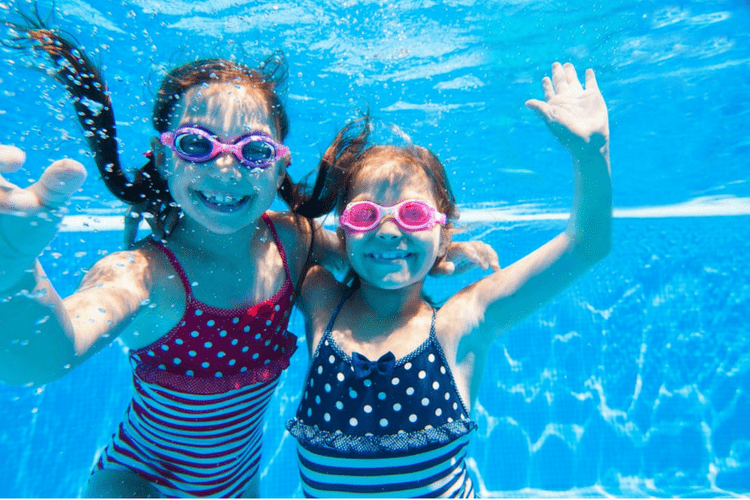How to Get Your Pool Ready for Summer
Few things are more enjoyable than lounging in your pool on a hot summer day. Knowing exactly how to clean a pool, however, can be confusing. There are several steps you should take when getting your pool ready for summer.

Remove the Pool Cover
You’ll need to thoroughly clean your pool cover and find a dry place to store it for the summer. If there’s water on your cover, you’ll need to remove it with your pool cover pump. If you have an in-ground pool, hopefully, you installed winter plugs to keep water from freezing in the pipes. Now is the time to remove the plugs. The next step is to evaluate the water.
Run the Filter
You’ll need to run the filter system until the water in your pool is clear. Before doing this, however, add any extra water that is needed. You might have lost an inch or two of water due to evaporation. After the pool is full, start the filtration system so the old and new water will circulate together. It’s important to let the filtration system run for at least eight to 10 hours. You’ll also need to know how to clean a pool filter. The following are the most common filter types:
- Cartridge filters – These can usually be removed and cleaned several times before they need to be replaced.
- Sand filters – Sand is more efficient than cartridge filters and needs to be changed less often.
- Diatomaceous earth filters – DE filters are expensive but the most effective.

Test the Water
When testing chlorine and pH levels, use a cup and reach down into the pool to get water that’s at least several inches deep. The CDC recommends testing pH and chlorine levels twice a day. You should also have the water tested by a professional once a month. Preferably, you should aim for the following levels:
- pH – This should be between 7.3 and 7.6.
- Phosphates – The level should be less than 100, and ideally 0.
- Alkalinity – The alkalinity should be between 80 and 120 ppm.
- Chlorine – Chlorine levels should be between 3 and 5 ppm.
- Stabilizer – You should have 30 to 50 ppm of cyanuric acid.
- Calcium – Calcium hardness should be between 150 and 400 ppm.
Purchase Chemicals
You’ll need to purchase either a test kit or strips for checking the level of all the necessary chemicals in your pool. A few basic chemicals you’ll need include chlorine, chlorine stabilizer and pH products. You should test and adjust alkalinity and hardness first. Then check the pH and add stabilizers. These steps should be taken before shocking the pool or using any type of chlorine tablets. It’s important to note that it may take a week or more for the water to become completely clear.

Remove Remaining Bacteria
Shock your pool with extra chlorine to remove all remaining bacteria. This is a process that involves adding enough chlorine to remove excessive chloramines. This is especially important if your pool was particularly green and had algae growing. Trouble Free Pool states that algae will never be a problem if you maintain the proper chlorine levels.
Perform a Safety Check
If you have any slides, ladders or other accessories, now is the time to check them. Skimmers, gratings, and baskets should also be cleaned and checked. If you have an above-ground pool, check for rips in the liner. Brush or vacuum any parts of the pool that still need some extra cleaning. It’s recommended to run the filtration system again, preferably overnight, before using your pool. Kids Health lists several important safety precautions pool owners should take.
Follow these steps to get your pool in prime condition. Pool cleaning does involve a bit of work, but it’s worth it once you’re in the water enjoying your pool!




